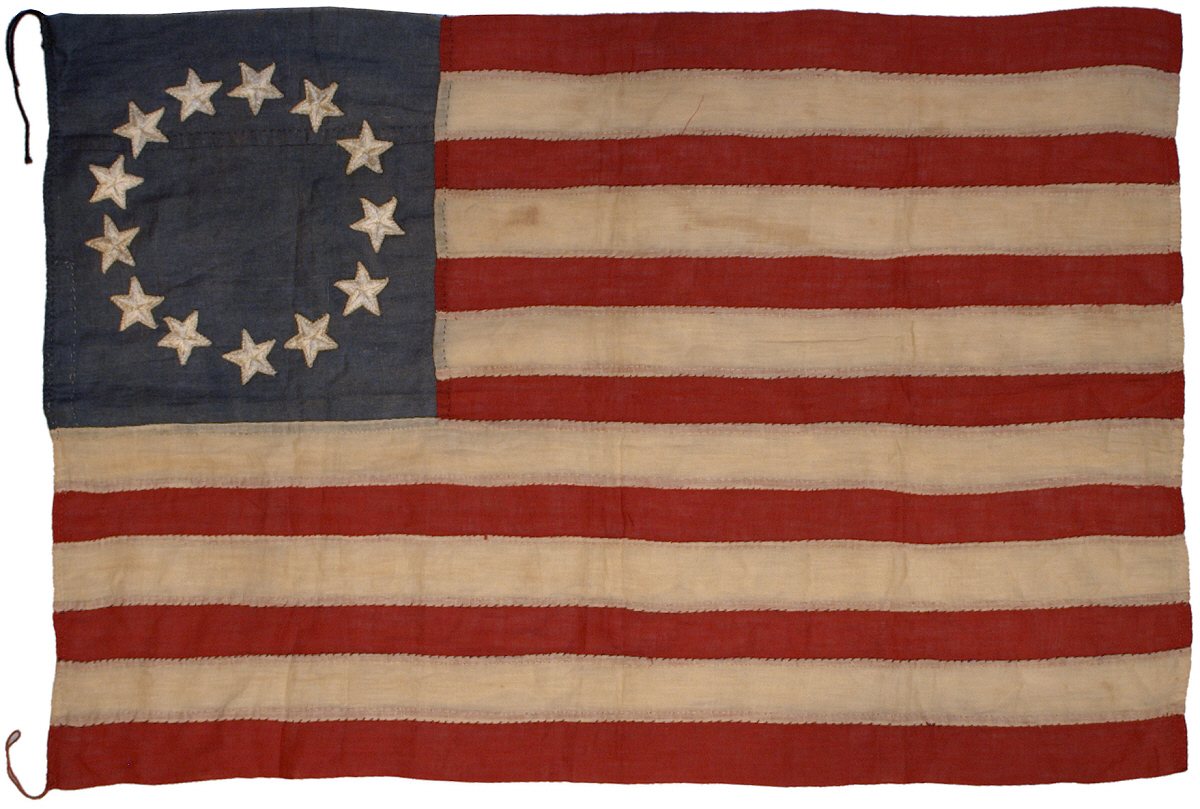
The American Flag in 1776: A Historical Exploration
The American flag, commonly known as the Stars and Stripes or Old Glory, is a potent symbol of American identity, patriotism, and national pride. Its iconic design has undergone several iterations throughout history, but the flag that flew over the newly formed United States of America in 1776 holds a special significance as a representation of the nascent nation’s identity and aspirations.
Genesis of the American Flag
The origins of the American flag can be traced back to the growing sense of American independence and unity that emerged during the 18th century. As tensions with Great Britain escalated, colonists began to express their desire for self-governance and a distinct identity.
One of the earliest instances of a flag representing American independence was the "Pine Tree Flag," flown by the Massachusetts Navy during the Battle of Machias in 1775. The flag featured a green pine tree on a white background, symbolizing the colony’s resistance to British rule.
The Betsy Ross Myth
One of the most enduring narratives associated with the American flag is the legend of Betsy Ross. According to tradition, Ross, a seamstress from Philadelphia, was commissioned by George Washington in 1776 to design and sew the first official American flag. While there is no documentary evidence to support this claim, the story has become deeply ingrained in American folklore.
The Grand Union Flag
In December 1775, the Continental Congress, the governing body representing the thirteen American colonies, adopted the Grand Union Flag as the unofficial flag of the United States. The flag consisted of the British Union Jack in the upper left quadrant and thirteen alternating red and white stripes representing the colonies.
The Grand Union Flag served a dual purpose. It displayed the colonies’ continued allegiance to the British Crown while also asserting their growing independence. However, as the conflict with Britain intensified, the need for a more distinct flag representing American autonomy became increasingly apparent.
The Star-Spangled Banner
In 1777, the Continental Congress passed the Flag Resolution, which officially established the American flag. The resolution specified that the flag should consist of thirteen stars, representing the thirteen colonies, on a blue field, and thirteen alternating red and white stripes.
The design of the flag was attributed to Francis Hopkinson, a New Jersey delegate to the Continental Congress. Hopkinson’s inspiration for the star pattern is unclear, but it has been speculated that he may have drawn inspiration from various sources, including a constellation, a Dutch tricolor, or a Masonic symbol.
The new flag, known as the "Star-Spangled Banner," represented a bold declaration of American independence and sovereignty. It flew over battlefields, forts, and ships during the Revolutionary War. The flag’s enduring legacy was immortalized in the 1814 poem "The Star-Spangled Banner" by Francis Scott Key, which later became the United States’ national anthem.
The Evolution of the American Flag
The American flag has undergone several changes since its initial adoption in 1776. As new states joined the Union, stars were added to the flag to represent them. In 1818, Congress passed an act stipulating that the flag should have 13 stripes and a star for each state in the Union.
Over the years, the American flag has been a witness to the country’s triumphs, struggles, and transformations. It has flown over battlefields, been planted on the moon, and become a powerful global symbol of freedom, democracy, and unity.
FAQ
1. Who designed the first American flag?
While the exact designer is unknown, the design of the American flag is attributed to Francis Hopkinson, a New Jersey delegate to the Continental Congress.
2. What do the stars on the American flag represent?
The stars on the American flag represent the fifty states of the Union.
3. What do the stripes on the American flag represent?
The thirteen alternating red and white stripes represent the thirteen original American colonies.
4. What is the significance of the blue field on the American flag?
The blue field on the American flag represents vigilance, perseverance, and justice.
5. What is the official name of the American flag?
The official name of the American flag is the "Flag of the United States of America."
References
- "The Star-Spangled Banner: The Making of an American Icon" by Howard Zinn
- "The Oxford Guide to American Symbols" by Robert C. Davis
- "The American Flag: A History of Our Iconic Symbol" by Tom Rinaldi
- "The Betsy Ross Myth: The Making of an American Legend" by Marc Aronson
- "The Grand Union Flag: The First American Symbol of Independence" by Mitchell B. Kohn





